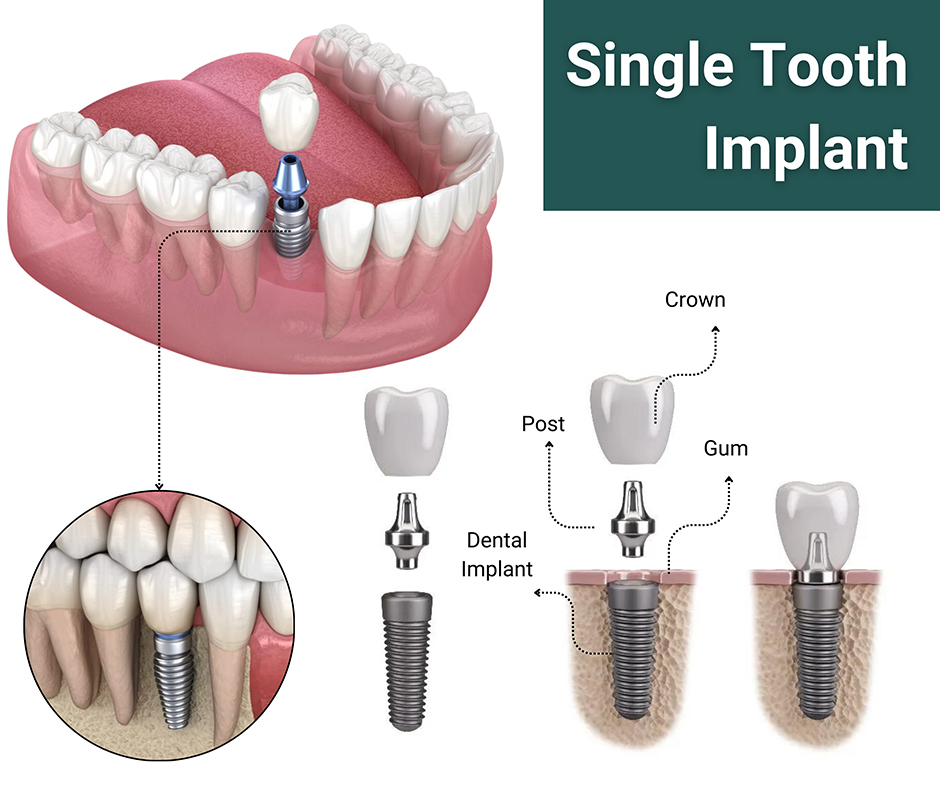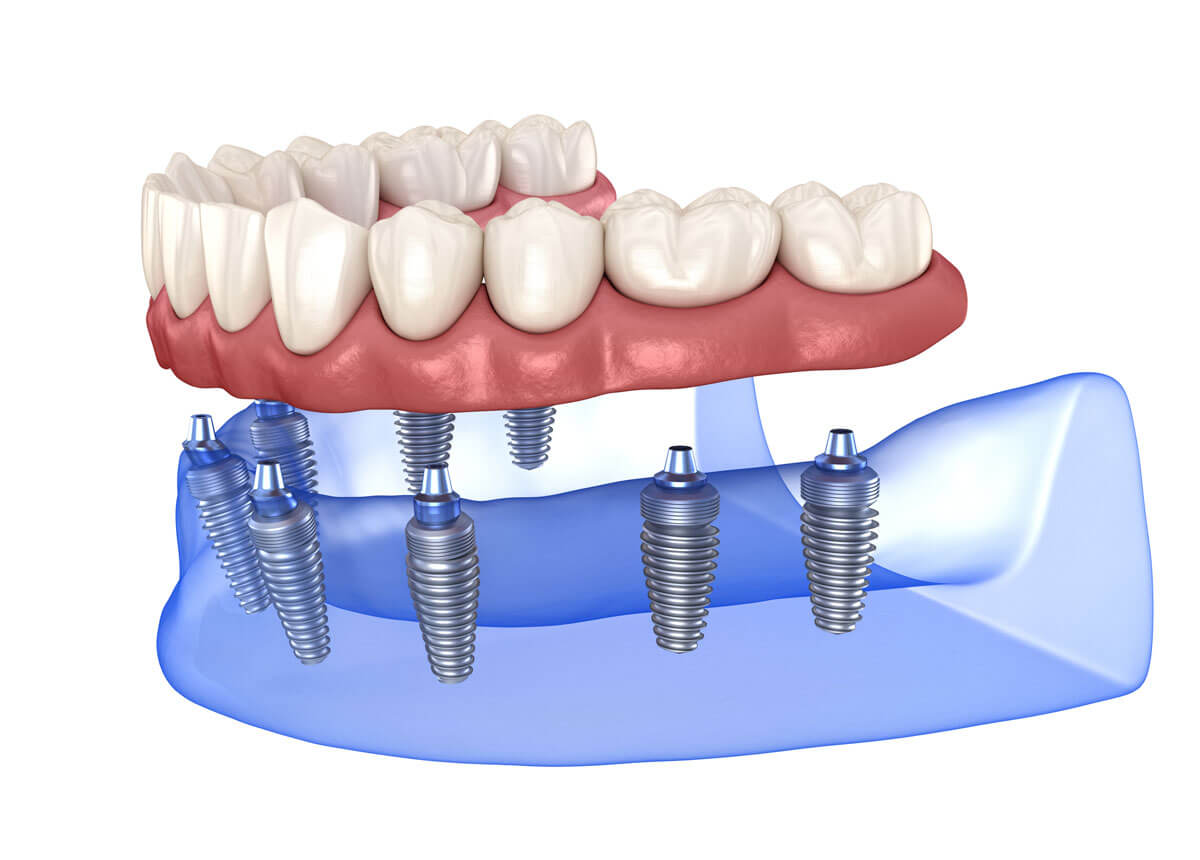An Unbiased View of Dental Sense
An Unbiased View of Dental Sense
Blog Article
Our Dental Sense Ideas
Table of ContentsLittle Known Facts About Dental Sense.Examine This Report about Dental SenseDental Sense - The FactsThe Definitive Guide to Dental Sense
are clinical devices surgically implanted right into the jaw to recover a person's capability to eat or their appearance. They offer assistance for artificial (phony) teeth, such as crowns, bridges, or dentures. When a tooth is shed due to injury or condition, a person can experience problems such as quick bone loss, defective speech, or modifications to eating patterns that lead to pain.Oral dental implant systems are composed of an oral implant body and dental implant abutment and may additionally consist of an abutment addiction screw. Root canal procedure. The oral implant body is surgically placed in the jawbone instead of the tooth's root. The dental implant abutment is usually attached to the implant body by the joint fixation screw and extends via gums right into the mouth to sustain the affixed artificial teeth
(https://experiment.com/users/dentalsense1)Structure of The Dental Implant System selecting dental implants, speak with your oral service provider concerning the potential benefits and dangers, and whether you are a prospect for the procedure. Points to take into consideration: Your general health and wellness is an important consider figuring out whether you are a good prospect for dental implants, for how long it will certainly require to heal, and for how long the implant may stay in area.
Smoking cigarettes may affect the healing process and reduce the lasting success of the dental implant. The recovery process for the dental implant body might take numerous months or longer, throughout which time you typically have a temporary joint in place of the tooth. the oral implant procedure: Meticulously adhere to the oral health directions given to you by your dental copyright.
Dental Sense Fundamentals Explained
Implant failing can result in the demand for an additional surgery to repair or replace the dental implant system. Recovers the capacity to chew Recovers cosmetic look Assists keep the jawbone from shrinking because of bone loss Maintains the health and wellness of the surrounding bone and gums Aids maintain surrounding (nearby) teeth steady Boosts top quality of life Damages to surrounding all-natural teeth during dental implant placement Injury to the surrounding tissues throughout surgical procedure, such as sinus perforation Injury throughout surgery (for instance, fracture of bordering jawbone) Insufficient feature, such as seeming like the teeth do not bite together typically A sensation that the tooth hangs or turning in area resulting from a joint screw loosening up Implant body failing (looseness of the implant body) because of systemic infection, which may be more probable in individuals with unrestrained diabetes as a result of local infection in bone and periodontals sustaining the dental implant body due to delayed healing, which may be a lot more most likely in people that smoke Difficulty cleansing the periodontals around the dental implant, leading to inadequate dental hygiene Without treatment gum condition Post-surgical tingling as a result of nerve impingement or damage Constantly alert health care carriers and imaging specialists that you have dental implants prior to any magnetic resonance imaging (MRI) or x-ray treatments.
FDA is not familiar with any kind of adverse events reported for MRI or x-ray procedures with dental implants. Oral implants systems are generally constructed from products that follow worldwide consensus standards of the International Organization for Standardization (ISO) or ASTM International. These requirements have details of what makes a risk-free material.

A dental implant is a structure that replaces a missing tooth. With screw-like tools, the surgeon inserts an implant into the jawbone, and it acts as a support for a fabricated tooth, called a crown. A tool called an abutment links the man-made tooth to the oral implant. The crown is customized to fit the person's mouth and match the shade of their teeth.
Excitement About Dental Sense
Some people are not eligible for oral implant surgical treatment. It is for dental surgeons to operate on individuals with: intense illnessuncontrollable metabolic diseasebone or soft cells illness or infectionIf these issues are solved, an individual can have the surgery. In, oral doctors refrain from operating people with: If people with any of the above go through oral implant surgical procedure, there is a greater risk of the dental implant falling short.

Oral implant surgical treatment is a tailored process. It's not the very same for everyone. But the complying with offers a basic summary of what you can expect your dental expert, dental cosmetic surgeon, periodontist or prosthodontist to do: Position the dental implant these details operatively. Provide you time to recover. Affix the message and final crown, bridge or denture.
Next off, your doctor will very carefully put the dental implant into your jaw. Ultimately, your cosmetic surgeon will certainly rearrange your gums and shut the incision with stitches. If your implant is near the front of your mouth, your dental practitioner will make a short-lived tooth for you to use until you recover. That means, you won't have a void in your smile while you recover.
Facts About Dental Sense Revealed
Throughout the recovery phase, your jawbone needs to fuse to the dental implant. This procedure can take anywhere from three to nine months.
When your dental implant heals, your dental expert can connect the abutment (little connector post) and your final repair (crown, bridge or denture). This typically takes about one hour to complete and might need a 2nd small surgery. You should not feel any discomfort throughout your dental implant procedure since your supplier will use drug to numb your gums.
Report this page